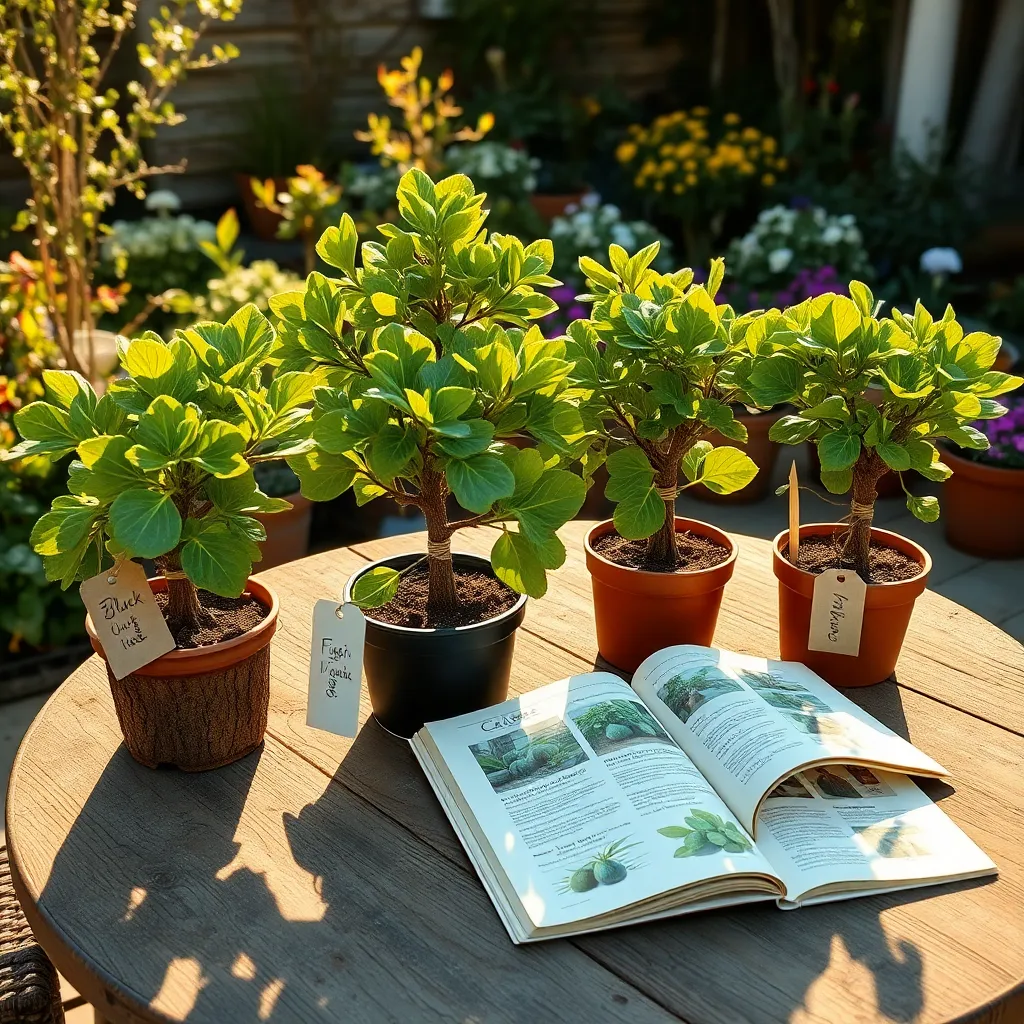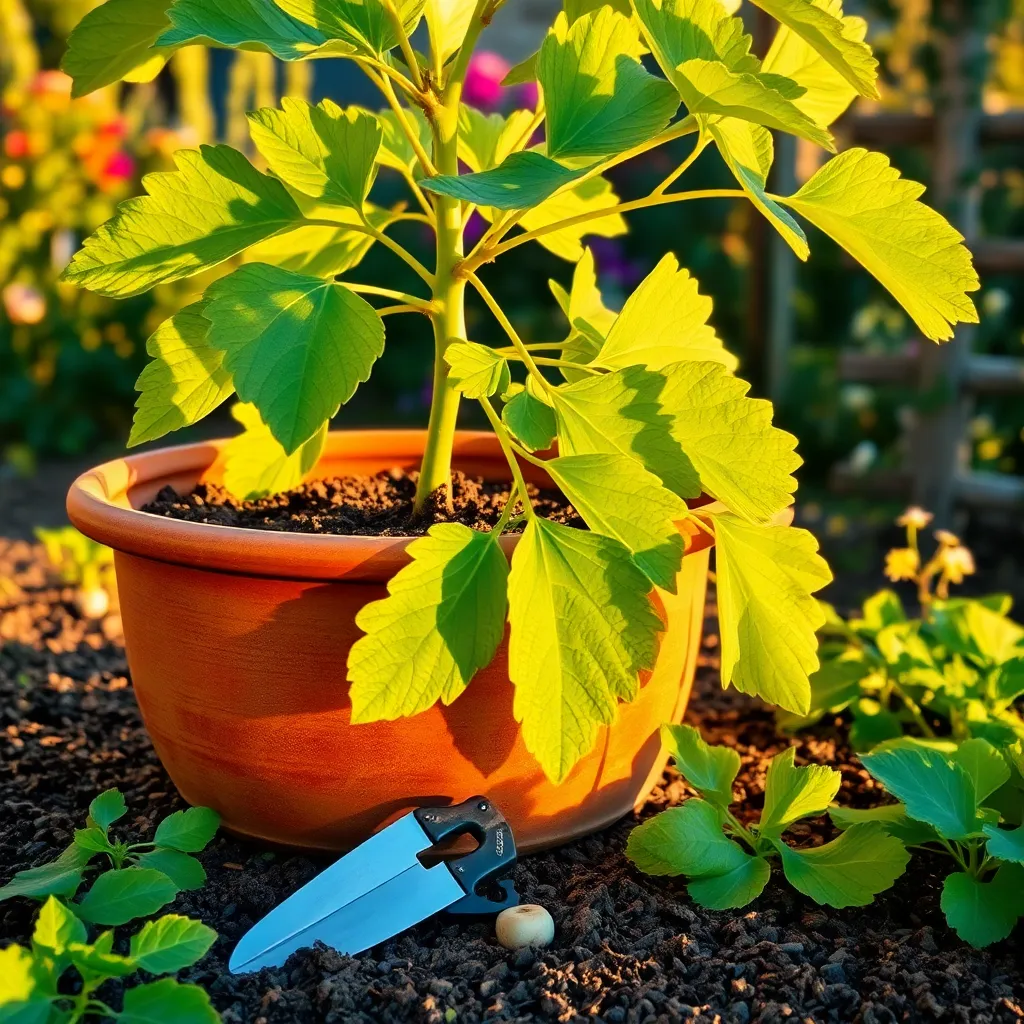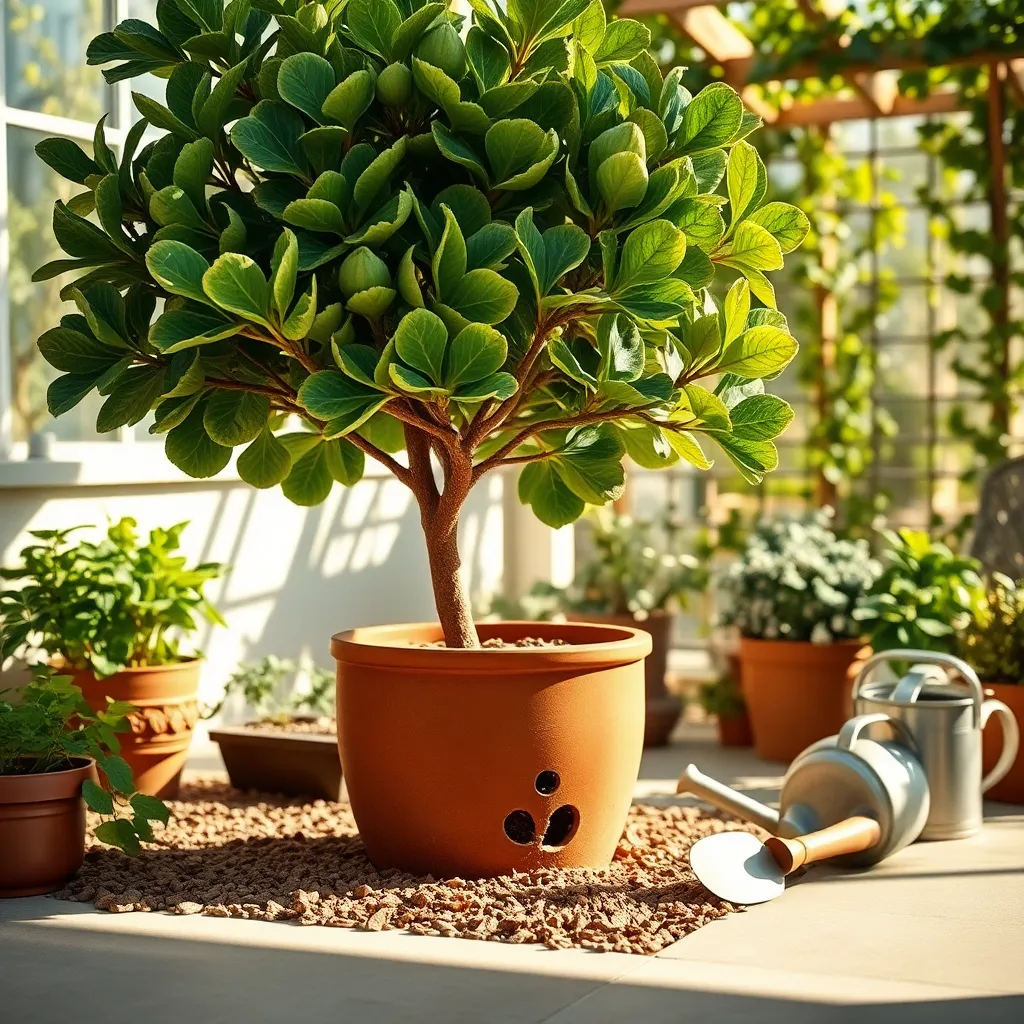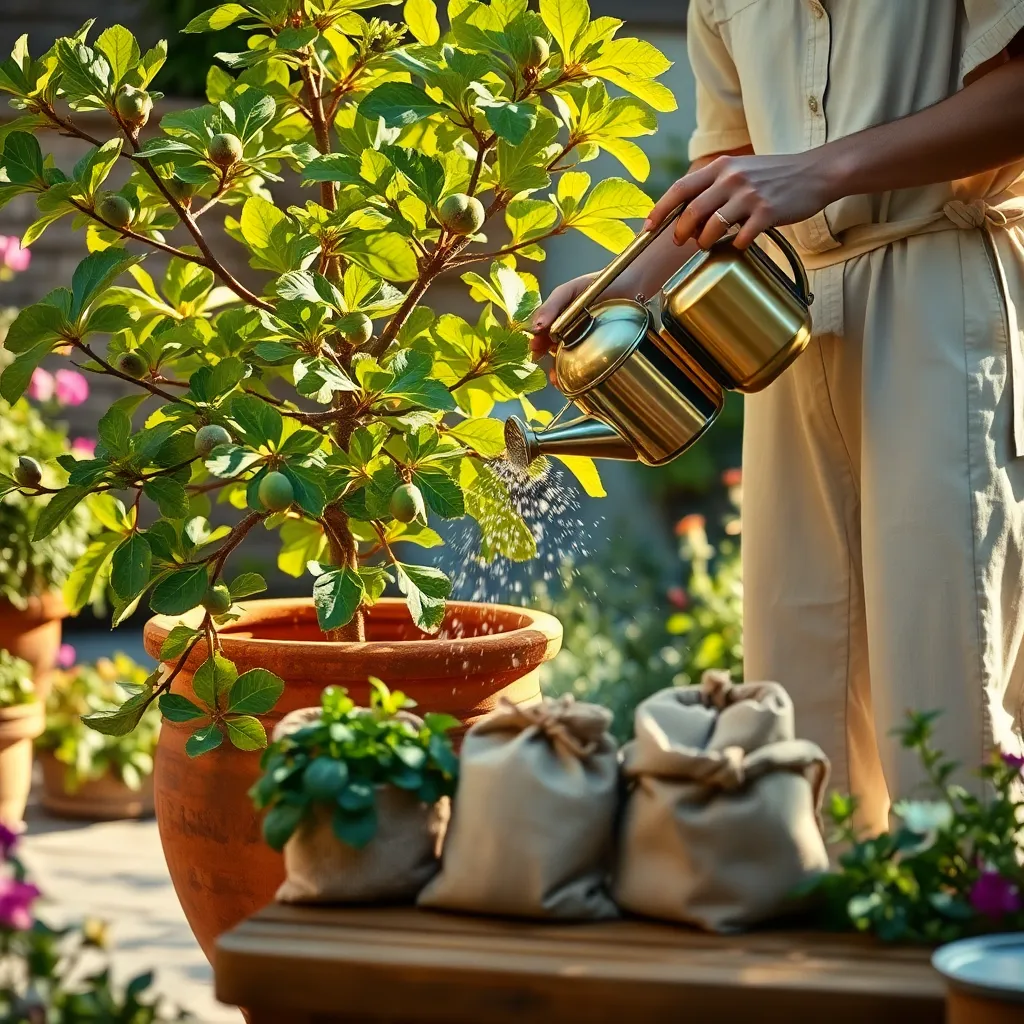Imagine stepping out onto your sunlit patio and picking a perfectly ripe fig right from your own container garden. Whether you’re a seasoned green thumb or just beginning your gardening journey, growing figs in containers is a delightful endeavor that brings the Mediterranean to your doorstep. These versatile fruits offer not only a sweet, honeyed taste but also the satisfaction of cultivating a tree that can thrive in confined spaces. In this article, we’ll guide you through the rewarding process of container fig gardening, ensuring a bountiful harvest regardless of your gardening experience.
Enthusiastic beginners and experienced gardeners alike will find that figs are surprisingly forgiving and adaptable. Their ability to flourish in pots makes them ideal for small spaces and urban settings where traditional gardening might be limited. Together, we’ll explore essential topics such as selecting the right container, choosing the ideal fig variety, and mastering watering techniques. You’ll learn how to create the perfect soil mix and discover tips for overwintering your fig trees, ensuring they remain healthy and productive year after year.
Growing figs in containers isn’t just about practicality; it’s about enjoying a personal connection with nature. You’ll find that nurturing these charming trees can transform your living space into a green oasis, filled with the promise of fresh, homegrown fruit. From understanding the nuances of fig tree care to troubleshooting common issues, this guide will equip you with the knowledge and confidence to succeed. So, let’s embark on this delightful gardening adventure and unlock the secrets to cultivating figs in containers.
Select a Suitable Fig Variety

Choosing the right fig variety is essential for successful container growing. Consider the climate you live in, as some figs are more cold-hardy while others thrive in warmer regions.
For beginners, varieties like ‘Brown Turkey’ and ‘Celeste’ are excellent choices due to their adaptability and reliable fruiting. These types are known for their ability to produce fruit even in less than ideal conditions, making them forgiving for novice gardeners.
Experienced gardeners might explore varieties like ‘Violette de Bordeaux’ or ‘Petite Negra’, which offer unique flavors and a compact growth habit suitable for pots. Keep in mind that these varieties may require more precise care, such as regular pruning and specific soil conditions, to thrive.
When selecting a fig for container growing, choose a dwarf or semi-dwarf variety to manage space efficiently. Ensure your container is at least 18 inches in diameter and depth to accommodate root growth and promote healthy development.
Choose a Spacious Container

When growing figs in containers, it’s crucial to choose a spacious container to support healthy root development. A container that is at least 18 inches in diameter and depth will provide sufficient space for the roots to spread and the tree to thrive.
Opt for a pot made from materials like ceramic or heavy-duty plastic, as these will help insulate the roots and maintain soil moisture. Ensure the chosen container has adequate drainage holes to prevent waterlogging, which can lead to root rot.
Fill the container with a high-quality potting mix that retains moisture but drains well, such as a blend containing peat, perlite, and compost. This type of soil provides the essential nutrients and aeration figs need to grow robustly in a confined space.
Consider placing the container on a wheeled plant stand, especially if you plan to move it for optimal sun exposure or to protect it during colder months. Regularly check the soil moisture level by inserting a finger about an inch deep; water the plant when the top inch feels dry, ensuring even moisture throughout the growing season.
Prepare Well-Draining Soil Mix

To ensure your fig tree thrives in a container, it’s crucial to start with a well-draining soil mix. This type of soil prevents waterlogging, which can lead to root rot and other issues.
Begin by combining equal parts of high-quality potting soil, perlite, and coarse sand. The potting soil provides necessary nutrients, while the perlite and sand improve drainage.
Consider adding some organic matter like compost or well-rotted manure to enrich the soil. This addition not only boosts nutrient levels but also enhances the soil structure, benefiting root growth.
Advanced gardeners might mix in a small amount of pine bark to further improve aeration. Pine bark helps to maintain the soil’s moisture balance, which is essential for healthy fig plants.
- Check the moisture level regularly by sticking your finger into the soil about an inch deep. If it feels dry, it’s time to water.
- Adjust your watering schedule based on the weather; figs in containers may need more frequent watering during hot, dry spells.
By preparing a well-draining soil mix, you’re setting the foundation for a strong and productive fig tree. This initial effort will pay off with healthier plants and potentially a more abundant harvest.
Plant Fig Tree Correctly

When planting your fig tree in a container, choose a pot that is at least 18 inches in diameter and depth. This size allows adequate space for root growth and helps the plant establish itself more effectively.
Ensure the container has good drainage by verifying that it has several holes at the bottom. This prevents root rot and other moisture-related issues, which are common problems for container-grown plants.
Fill the container with the well-draining soil mix you prepared earlier, leaving about 2 inches from the top. This space allows for proper watering without overflow, ensuring that the soil can absorb moisture efficiently.
Gently place the fig tree into the container, making sure it’s positioned at the same depth as it was in its nursery pot. Press the soil around the base firmly to eliminate air pockets that could hinder root development.
Water the fig tree thoroughly after planting to settle the soil and provide initial hydration. For the first few weeks, keep the soil consistently moist but not waterlogged to support strong root establishment.
Once the tree is established, water deeply when the top inch of soil feels dry, typically once a week. During the growing season, apply a balanced fertilizer every 4 weeks to encourage healthy foliage and fruit production.
Water and Fertilize Regularly

To ensure your fig tree thrives in a container, maintaining a regular watering schedule is critical. Figs prefer consistently moist soil, but be careful not to overwater, as this can lead to root rot.
Water your fig tree deeply until excess water drains from the bottom of the container, ensuring the roots have adequate moisture. During hot summer months, you may need to water more frequently, sometimes every day, depending on the size of your container and the climate.
Fertilizing is equally important to support healthy growth and fruit production. Use a balanced, slow-release fertilizer in early spring when new growth begins and again in midsummer to sustain your tree throughout the growing season.
For those looking to optimize growth, consider adding liquid seaweed or fish emulsion to your watering routine every few weeks. This can provide the necessary micronutrients and boost vitality, especially in containers where soil nutrients deplete more quickly.
- Check the soil moisture by sticking your finger about an inch deep into the soil; if it feels dry, it’s time to water.
- Always choose a container with drainage holes to prevent waterlogging.
- Consider using a potting mix designed for fruit trees to ensure optimal nutrient availability.
Conclusion: Growing Success with These Plants
In nurturing the delicate art of growing figs in containers, we’ve explored five key relationship concepts that parallel this rewarding horticultural endeavor: creating a supportive environment, ensuring consistent care, fostering growth through proper nourishment, understanding the importance of space and boundaries, and celebrating the fruits of patience and perseverance. Just as a fig tree thrives with these principles, so too can your relationships flourish with dedicated attention and care.
As an actionable next step, take a moment to reflect on one area in your relationships where you can apply these concepts today. Whether it’s offering more support, setting healthy boundaries, or simply celebrating small milestones, your efforts can cultivate deeper connections.
To continue nurturing your relationships with the wisdom shared here, bookmark or save this article for future reference. This ensures you have a handy guide to revisit when you need a gentle reminder of how to keep your relationships thriving.
Remember, the journey to relationship success is a continuous one, with each step building towards a more fulfilling and harmonious connection. With a little effort and the right guidance, your relationships can blossom beautifully, just like those cherished figs.
